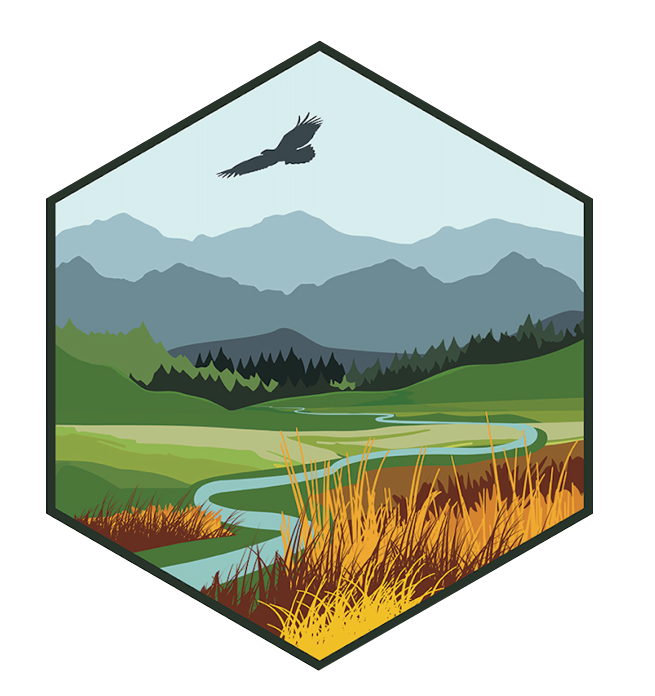Building Ethical Space
Date
The Traditional Ecological Knowledge Workshop was a two-part virtual training, held on July 29 & 31, 2025, designed to equip participants with the foundational knowledge and practical skills necessary for engaging with Indigenous Peoples, Nations, and communities in collaborative natural resource research and decision-making. Led by Indigenous governance consultant, Gwen Bridge, and co-convened with NC CASC’s Tribal Engagement Specialist, James Rattling Leaf, Sr., this workshop guided participants through a structured framework for engagement preparation, emphasizing critical elements such as individual behavioral awareness, organizational readiness, and strategic engagement planning.
In recent years, a growing number of scientific organizations have begun asking critical questions about how to engage meaningfully and ethically with Indigenous peoples. For Bridge, the answer lies not in policy statements or one-off collaborations, but in a deeply reflective, structured process, or, what she calls the Trajectory of Awesomeness. At its heart, this four-part framework calls on individuals and institutions to rebuild relationships by honoring Indigenous laws, knowledge systems, and obligations to the land.
Before any organization or researcher can meaningfully engage with Indigenous communities, they must first turn inward. The first step in Bridge’s framework, the Behavioral Core, centers on personal and historical self-awareness. Who are you? What histories and assumptions do you bring to the relationship? What is your foundational understanding of concepts like ethical space, Indigenous legal systems, and the nature of authority? This is where many engagement efforts falter; they begin with strategy or outreach without having cultivated the humility and knowledge necessary to enter a truly reciprocal space. Understanding must precede action, otherwise, we risk reproducing extractive dynamics even with the best of intentions. Bridge invites us to consider the assumption that humans have been delegated authority over the natural world. Many Indigenous knowledge systems hold that humans are obligated to the natural world, which bears the ultimate authority. This viewpoint is not merely philosophical; it is structural. It must be acknowledged before any meaningful collaboration can begin.
The second step in the trajectory assesses an organization’s readiness for the implications of an authentic relationship. This means evaluating not just diversity statements, but actual policies, resources, and decision-making structures. Who holds power? How are decisions made? Is there space for Indigenous authority and worldview to influence outcomes? Organizations must ask whether their own internal culture allows for the kind of mutual respect and co-leadership that true relationship requires. To support this assessment, Bridge offers the “Rapid Reconciliation Readiness Matrix”, which maps organizations across two axes: clarity of vision and ability to change. Institutions that are high on both are well-positioned for transformative engagement; those that lack either vision or agility must first address structural inertia or identity confusion before moving forward. A common barrier, she notes, is the lack of internal policy reform mechanisms, which makes it difficult to integrate ethical space insights into practice.
Only after steps one and two does Bridge recommend approaching engagement. And even then, the emphasis is on understanding rather than action. This third step involves developing a strategy grounded in a deep awareness of the priorities, histories, aspirations, and protocols of potential Indigenous partners. It’s about recognizing that Indigenous peoples are not homogenous; each Nation has its own governance, values, and relationships to land and knowledge. Engagement cannot succeed unless it is grounded in a clear understanding of the motivations behind it. Yet even the best motivations can fall short if they are not accompanied by humility and a willingness to listen. “Relationship begins when we stop asking ‘How do we get what we want?’ and start asking, ‘What does right relationship look like for all involved?’” Bridge offers the Teepee Framework as a model for holistic engagement. It envisions seven interdependent “poles” that uphold Indigenous aspirations, ranging from science and technical knowledge to ceremony, legal action, direct action, communications, negotiations, and economic strategy. All must be strengthened together to uphold the shared goal. Strategic engagement that fails to account for these interconnected pillars risks becoming extractive or performative.
Relationship is the fourth and final step. It is not built through a single meeting, dinner, or even partnership, but rather through sustained, reciprocal practice in ethical space. Coined by Blackfoot elder Reg Crowshoe, the concept of ethical space is not a metaphor. It is a literal space created when two worldviews, each with its own laws, logic, and legitimacy, come into dialogue without attempting to subsume one another. Ethical space is not integration, nor is it consensus. It is the creative practice of respecting difference and allowing new solutions to emerge from shared values, not forced alignment.
At the root of most conflicts between Indigenous and non-Indigenous systems is a deep misalignment in how authority is understood and practiced. In many non-Indigenous frameworks, human institutions, such as courts, governments, and policies, determine appropriate behavior. Science provides evidence, but it does not command action. In contrast, many Indigenous worldviews understand authority as residing in the land itself. The Okanagan example, which Bridge often cites, posits that the natural world, such as mountains, rivers, animals, has legal authority. Humans are obligated to respond to the decrees of the natural world. In the Indigenous view, system outcomes influence human decisions, not the other way around. This flips the dominant non-Indigenous paradigm. Thus, when Traditional Ecological Knowledge is subjected to external validation, and when its authority is contingent on whether it aligns with policy or peer-reviewed science, it creates a structural, not merely interpersonal, conflict.
In the end, the Trajectory of Awesomeness that Bridge lays out is not an easy one. It asks us to change, not just how we work, but how we see the world and our place within it. It reminds us that trust is not granted by words but earned through actions that demonstrate respect for Indigenous authority, knowledge, and law. It teaches us that dialogue requires translation, not of language, but of worldview. And it insists that meaningful engagement cannot begin only with handshakes and goodwill. It must begin with truth. As Bridge puts it, “You can’t skip to Step Four. That’s not a relationship. That’s a transaction.”


